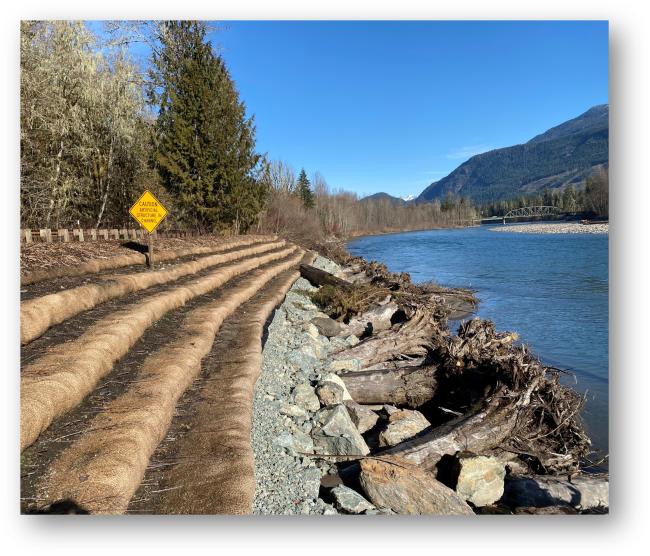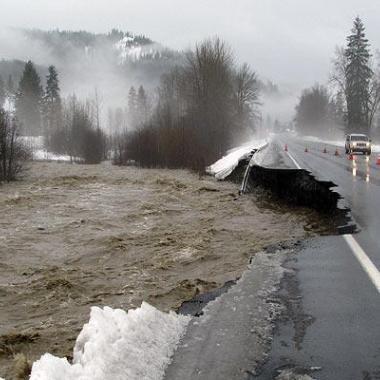Planning study news
We are developing a transportation resilience improvement plan (TRIP) to help decision-makers prioritize investments to address climate and natural hazards including flooding, wildfire, sea level rise, landslides, and earthquakes. We are kicking off this planning study with data collection for a vulnerability and risk assessment.
Public and partner engagement opportunities will be available soon.
Purpose
The TRIP will help decision-makers prioritize immediate and long-term investments to address climate and natural hazards such as flooding, wildfire, sea-level rise, landslides, earthquakes and more. These hazards could disrupt transportation networks and make it difficult for our communities to get services they need, especially in times of emergency. Mitigating these hazards can protect human life and well-being, economic stability, and the natural environment.
This effort includes a statewide vulnerability and risk assessment. We will also map roads, bridges and other transportation features that are vulnerable to climate hazards. This will supplement WSDOT’s 2011 Climate Impacts Vulnerability Assessment (PDF 5.6MB), by including updated data; adding natural hazards such as seismic events; and incorporating a risk-based approach. The assessment will look at both current and potential future threats. The TRIP will coordinate with other WSDOT recent vulnerability assessments on I-5, coastal resilience, rail, and ferry terminals.
The TRIP final report will summarize existing climate adaptation policies, tools, guidance, and activities that position WSDOT and our partners to make immediate and long-range investments. It will also include a prioritization framework for resilience projects, and a prioritized project list for consideration by decision-makers.
The TRIP directly supports WSDOT's Strategic Plan goal of resilience. Also, developing the TRIP is a recommendation of the State Climate Resilience Strategy, a multi-agency effort established in Chapter 70A.05 RCW.

The 2021 federal Infrastructure Investment and Jobs Act (IIJA) established the Promoting Resilient Operations for Transformative, Efficient, and Cost-Saving Transportation (PROTECT) Program to make surface transportation more resilient to weather events, natural disasters, and changing conditions.
States can use PROTECT funding in transportation planning to create resilience improvement plans, which are risk-based assessments of vulnerable transportation assets that demonstrate a system-wide approach to fortifying the surface transportation system. Several states and metropolitan planning organizations have recently done transportation resilience improvement plans to address the effects of extreme weather and natural hazards.

